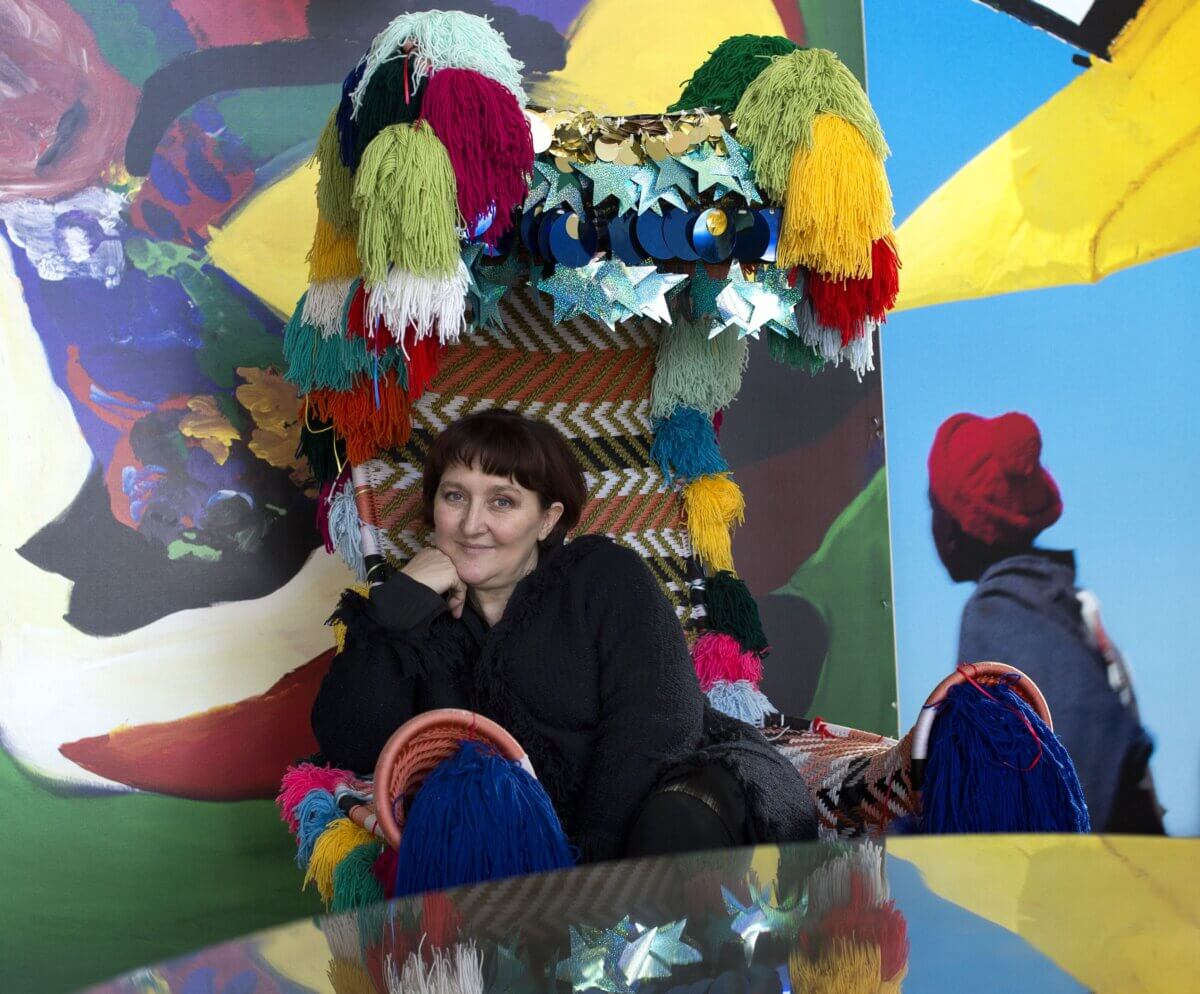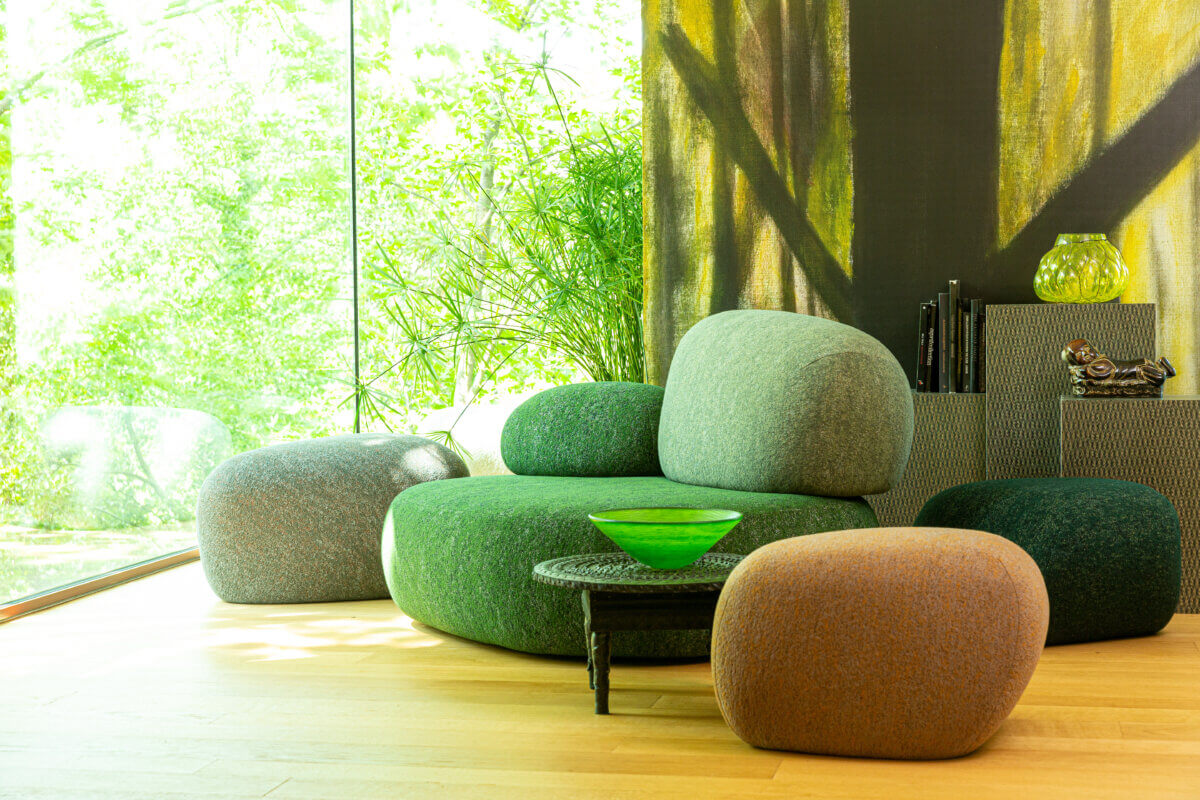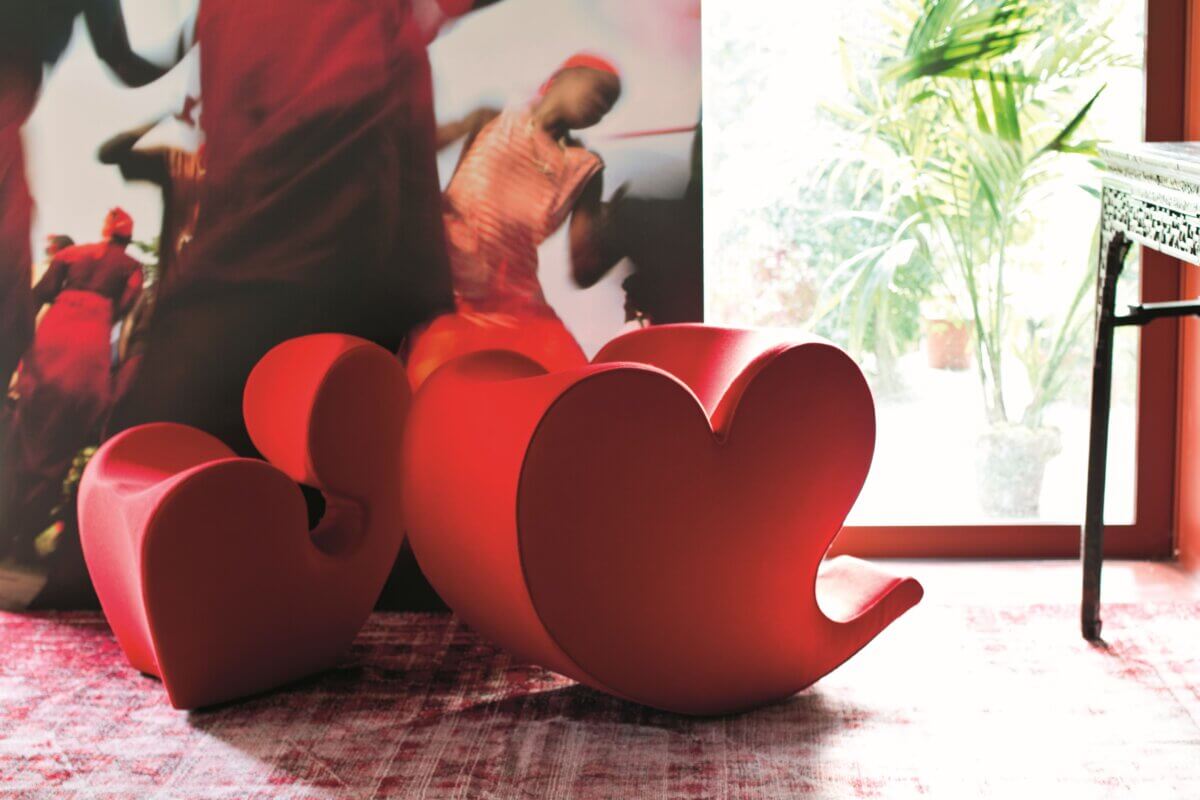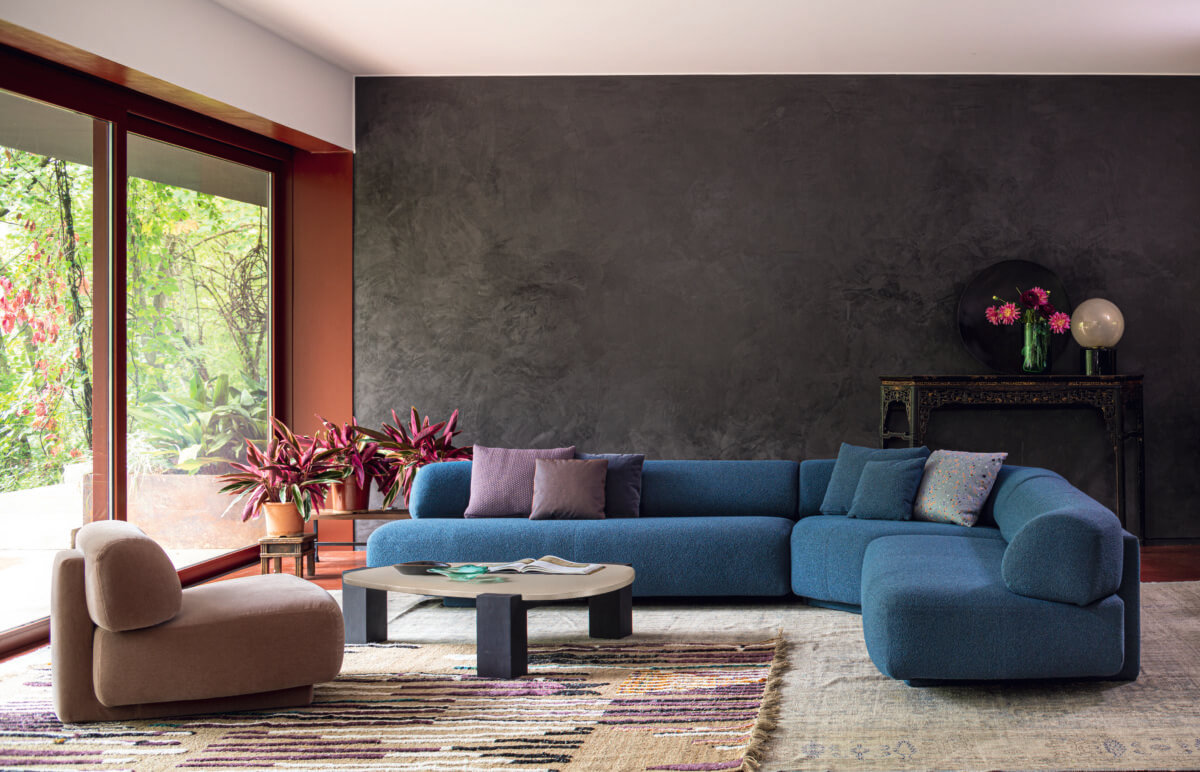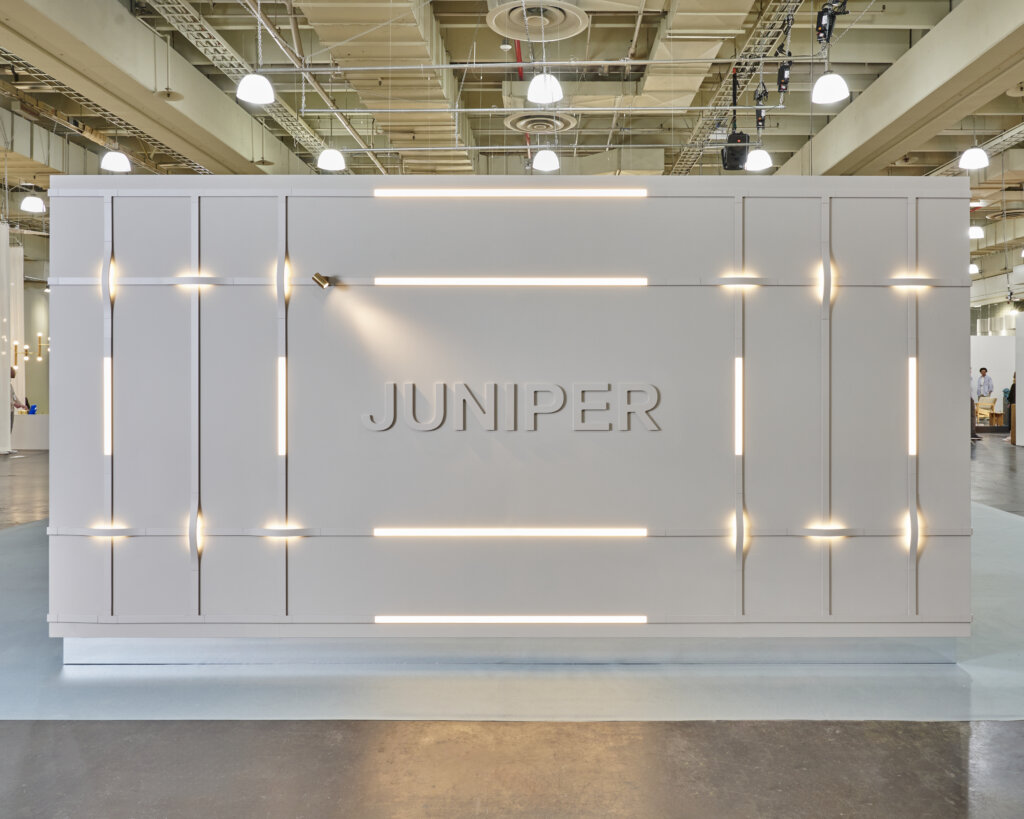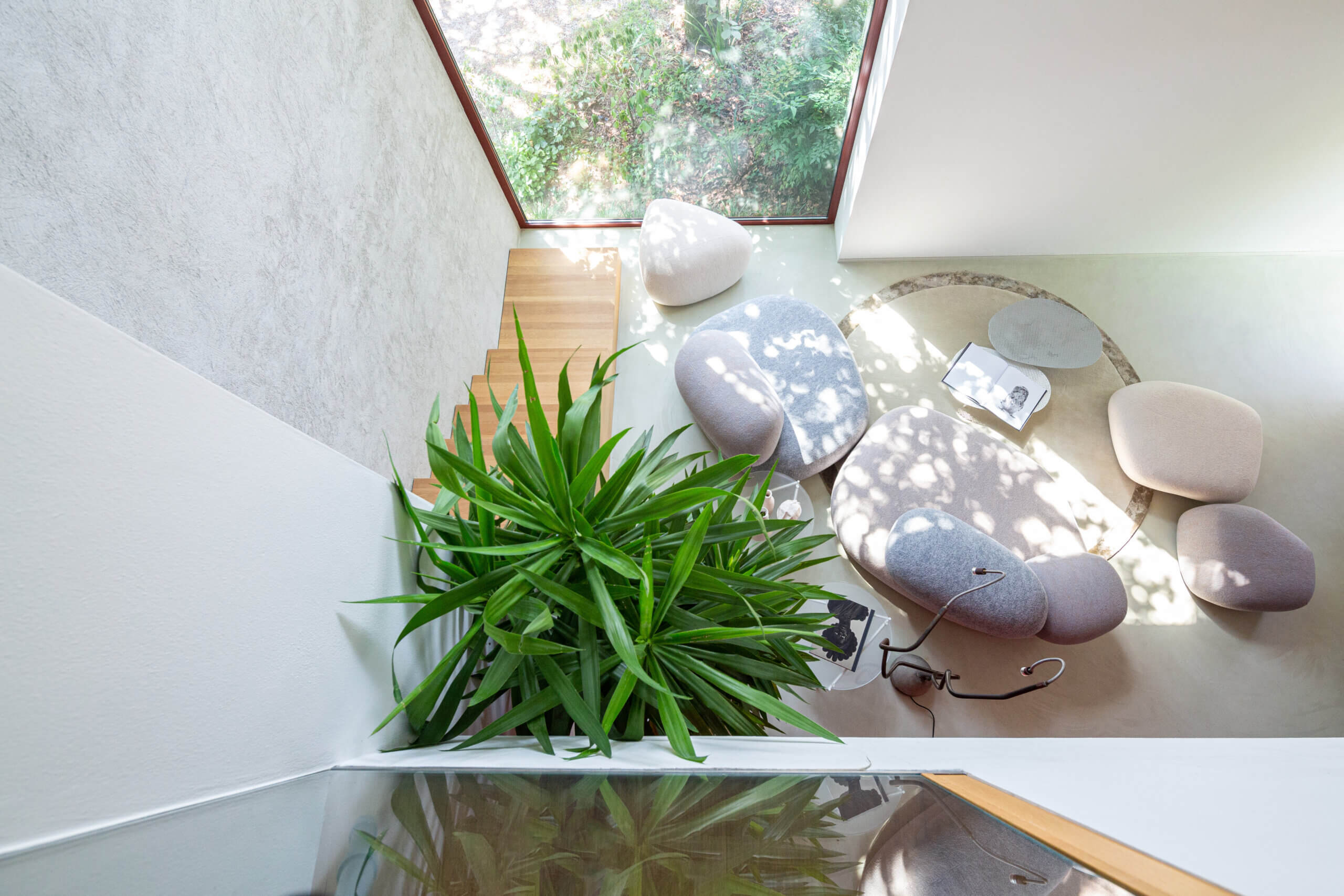
Founded in 1952—during a post-World War II economic boom—Moroso is one of the rare brands, Italian or of other origin, to have maintained its independent status. Operating in the far-flung northeastern reach of the country, away from the concentration of big-name producers in Milan-adjacent Lombardy or Veneto, the boutique brand has held fast to its distinctive identity while still playing with the best of them. Having helped bring once fledgling designers like Patricia Urquiola, Marc Newson and Ron Arad to the forefront over the decades, the company has cultivated a philosophy of artistic expression and material experimentation all while harnessing a long-list of era-defining and paradigm-shifting concepts in tangible applications through the implementation of age-old artisanal prowess found around the world. Many of these iconic furnishings now feature prominently in the annals of design history.
The vision of its long-time creative director Patrizia Moroso—her shrewd ability to spot promising talent and collaborate with expert craftspeople—has also been integral to the ongoing success of the brand her parents established over 70 years ago. Ahead of ICFF 2025, this indisputable doyen of contemporary design spoke to the platform about the evolution of legacy; the advantages and challenges of keeping a family-run business relevant without having to kowtow to passing fads.
(Image above: Pebble Rubble Sofa, Photo Credit: Alessandro Paderni)
What goes into operating a family-run heritage brand within the design sector these days?
Patrizia Moroso: I’ve been part of the company since I was born. Being involved for so long means that there will always be advantages but also some unpredictable aspects. A lot of small family-run established businesses were integral to post-World War II reconstruction in Italy and for the large part, defined the country’s ever influential design scene. A major part of that success was the inclusion of staff architects, not necessarily individuals just trained as designers, who brought in the culture. While I was studying fine art in the mid-1980s, an economic crisis hit the country and many of the companies were severely affected. My parents asked my brother and I to come into the company and help ensure it wouldn’t suffer the same fate. We felt it was critical to uphold the practice of harnessing the intelligence architects and other creatives can bring to the table and fully explore the freedom we had as an independent entity. In these scenarios, one can take the risk to innovate and remain conscious of those choices. Because it’s so close to your own well-being and livelihood, it’s not merely a profession but a vital part of who you are.
Eventually, I discovered that this unplanned destiny was a blessing, an unexpected chance to flex my artistic vision and operate as a curator in many respects. Regardless of if I’m working with a noted architect/designer or artist—very different fields in my mind—or even an artisan, the creative exchange is almost always the same. This has been a defining aspect of Moroso since we took over its direction. There’s great satisfaction and enrichment in the collaborations. Because we’re not part of a larger group with lofty principles and financial benchmarks that need to be met at certain intervals, we’ve been able to refine our unique approach to research and development; push the limitations of convention and experiment; weather the circumstance of a failure but also fully enjoy the trappings of a successful outcome. It’s all about following instinct and helping to introduce concepts that are truly dynamic. This could never be accomplished in a company where, in my capacity, I would be relegated to sitting behind a desk and managing everything over the phone. It’s essential that I remain hands-on.
What strategies, and programs have you implemented to keep Moroso relevant? What tenets/attributes of the brand remain timeless and evergreen in this regard?
P.M.: The ability to work with a diverse range of external talent to collectively achieve cutting-edge ideas has set us apart. I hold fast to the notion that my role is to defend these architects, artists, and designers’ freedom. Every new concept brings something new to our offering. We work with big names; unknown names; those that are old and old; creatives from Italy, China, and everywhere in between. Our collections inherently reflect that diversity and the confluence of vastly different perspectives but stay coherent.
How has Moroso not only introduce a diverse gamut of products and the projects but also fostered a sense of culture.
P.M.: Because of this guiding philosophy—our willingness to work with anyone that has a strong design they want to develop—we don’t necessarily subscribe to the idea of having a set lifestyle we’re hoping to project. The ethos has always been unfettered creative freedom anchored in the application of furniture, furnishings, accessories, and spaces. We’re far more interested in celebrating the cultural dimension of what we choose to incorporate, what a certain color signifies or how the surface of an object upholstered in a new type of fabric might represent on a conceptual or referential level. These careful considerations need to help communicate the body, the language of that form or volume.
One of the first designers I began working with was Ron Arad. Moroso was one of the first brands companies to fully embrace his career-defining exploration of metal; his deft transformation of this material almost as a tensile fabric delineating curvilinear shapes. Making such a bold step needs to be done right otherwise it’s easily written off or disregarded. We have the time and space to really go through the process and ensure the results reflect the initial concept as closely as possible. With us, Arad has developed seminal designs like the Spring Collection (1988) For these pieces—the Big Easy chairs and sofas as well as the Tilt Lounge chair—the colors are strong because they express in fabric exactly what metal is in an object. One must translate, even exaggerate the sense of strength, durability, and intensity to such the conceptual propositions as clear as possible.
What is another iconic design from your roster that you feel best demonstrates this ethos?
P.M.: Developed with Swedish duo Front in 2022, the Pebble Rubble sofa system very much lines up with the idea that the fabric we use and how we implement it needs to emphatically drive home the underlying concept. Developed during the COVID-19 pandemic, we had the time to fully explore what the surface and shape of slabs of stone look and feel like on a tactile level. We worked closely with Danish textile brand Kvadrat to source the right textiles. It’s a nice fabric but the optimal synthesis of the digital analysis of a natural element rendered not just in two-dimensional color but also in three-dimensional form: an authentic translation, not a cheap imitation. For any deep research we engage in, there needs to be a succinct outcome.
How have you been able to uphold age-old craft traditions while also introducing new manufacturing technologies?
P.M.: I’m fascinated by many different things. I can be crazy for a digital fabric, the pixelation you can find on a beautiful screen; connect to things that are perceived as cold but beautiful because they’re too complex for the human hand to achieve. The intricacy of nature can only really be translated with the help of a computer. The digital tool is there not to express itself but to assist in the actualization of that replication. At the same time, I love how long-established handicraft techniques can be re-assessed and implemented in different, never before thought-of, ways. Transversely, there’s a level of complexity that can only be achieved through the human hand, nuances that the computer cannot carry out. We need to happily mix the two strategies as this hybrid approach remains evergreen and relevant.
Talk about the importance of the US market and the impetus behind establishing a flagship in New York’s ever burgeoning Nomad design district.
P.M.: From a cultural standpoint, the United States, and perhaps more specifically New York City, has always been an important reference point. The art and expression of modernity found not only in museums but in different facets of everyday life in this context informs our desire to experiment and innovate. Let’s hope it can continue to carry that clout. For us, it’s critical to have a presence here. It always feels like visiting a friend’s very familiar home.
If you are curious to discover more about Moroso, check out their website, HERE
Follow Moroso on Instagram, and if you wish to meet the team, make sure to connect with them at ICFF, May 18-20, 2025
Save the date: Patrizia Moroso will be on the Main Stage at ICFF on May 18 at 1:00 PM
